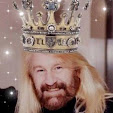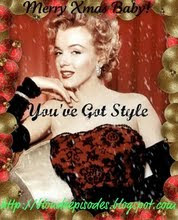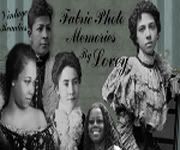
One of the greatest myths about the 2017 P.T. Barnum biopic musical The Greatest Showman
is that P.T. Barnum invented the circus, even getting the name from a
theatre critic who called it a “primitive circus,” as in the derogatory
meaning meaning “chaotic or ridiculous event.”
In fact, Philip Astley of England popularized the circus ring in the 1760s. He started with vaulting, a performance form in which he rode a horse galloping in circles. He was able to do this because the horse’s movement creates a centrifugal force that allowed him to balance. These early circuses also included staged combat, and in fact the pantomime, what we now associate with white-faced voiceless street artists, initially included battle reenactments akin to LARPers. Again, this made heavy use of equestrian acts.

Astley’s great success, however, was in integrating this trick with
music, acrobatics, and clowns, all ancient art forms that took place in a
ring-shaped stage. Acrobatics and balancing acts date back to 2500 BCE
in Egypt. In a way, Astley was responsible for a new Renaissance
incorporating these art forms into contemporary entertainment. The
circus ring was and still is 42 feet in diameter, and the name circus is
from the Latin for circle.
With many contemporary circuses, we see a similar integrated experience,
notably featuring acrobatics and music. However, many circus
productions today have narrative structure making them more akin to a
cabaret style show. Overall, the combination of narrative with music and
movement is best known to American audiences as the stage musical or
opera; however, both cabaret and cirque have particular differences. For
one thing, they intend to amaze and even shock audiences.





P.T. Barnum picked up the sideshow approach from Europe, exhibiting unusual people, and unlike in The Greatest Showman, it wasn’t necessarily an empowering troupe of diverse characters. (Nor did they all drink together — Barnum was a teetotaler.)
Both
cabaret and circus incorporated clowning, derived from medieval jesters
but moreso from commedia dell’arte, Elizabethan theatre, and Victorian
vaudeville, all of which used slightly varying forms of performance and
aesthetic to parody and satirize. In fact, these acts were called burlesques, meaning “comedy.” The word “burlesque” has been partly misappropriated to mean striptease after dancing girls acts began to take over speakeasies, many of which had a heavy cabaret influence. (Read reigning burlesquer Dita von Teese’s excellent reflexive history of burlesque.)

commedia dell’arte stock characters
Victorian era Jester

an original Jester
Burlesque icon Gypsy Rose Lee 
Burlesque in the Vaudeville Era

Marlene Dietrich in “The Blue Angel

If not the best burlesque costume ever, my favorite! (keeping that equestrian theme)
Although
much circus takes place in a theatre building these days, during
circus’ heyday in the mid-19th century, tents were popular — and again,
not invented by P.T. Barnum but instead by Joshuah Purdy Brown.




No such thing as humble advertising for Barnum, Bailey or Ringling!
In the U.S., the traveling circus suffered a decline after its Barnum and Bailey era in the mid-19th century. According to National Geographic,
between the world wars, as the country experienced economic depression,
so did the circus. New passport laws, customs regulations, and currency
caps significantly limited the freedom of movement they enjoyed in the
century prior. Simultaneously, the demise of train travel and the
arrival of the motor vehicle forced many circuses to abandon the
railroad and move back into truck shows. By the time the country finally
recovered from the Great Depression, the advent of motion pictures and
television posed a new threat, as the public was faced with ever
expanding entertainment options.
In
2017, Ringling Bros closed. CEO Kenneth Feld said that the circus was
no longer relevant in the same way. However, since the 1980s, a new era
of circus had been brewing.

This has long been my favorite vintage circus image! I used in several memory and junque albums!
Contemporary
circus involves a renewed focus on acrobatics and other human skills
that notably, don’t involve animals. (However, dog, horse, and even cat circuses exist.) One notable addition is aerial dance and acrobatics.

James Leotard

Contemporary Chinese Pole
Although certain forms of aerial performance date back to 12th century
China — the origins of pole dancing — flying trapeze was not invented
until the mid 1800s, by Jules Leotard
(yes, the namesake of the characteristic garment worn by acrobats and
dancers), and apparatuses such as aerial silks, aerial hoop, and aerial
rope appeared only in the 20th century.
trapeze, top, and aerial hoop (also called lyra) bottom
One thing The Greatest Showman gets right is that the aerialist swings around the circus ring on a rope; acrobats invented trapeze, after translating their tightrope acts into “loose rope” acts, and eventually added a bar to it. Now, new aerial apparatuses appear every year and can take unique forms, such as aerial chandelier, aerial birdcage, aerial umbrella, aerial cube, and aerial gyrosphere.

aerieal spiral

aerial umbrella

aerial birdcage

aerial cube

Spanish web
aerial straps

original lyra

rope sling

cage...net(?!)
Circus arts now encompass the ancient forms such as Chinese pole and
Egyptian acrobatics, the classical forms such as clowning and vaulting,
and new forms such as aerial dance, along with a dose of sideshow shock
in some circuses and a speakeasy aesthetic in others. Around the world,
more and more circus schools and aerial dance studios open their doors
every year, and the public’s appetite for circus has actually expanded
from beyond the once-a-year big-top rolling into town to frequent
encounters at lounges and clubs, as well as destinations such as theme
parks and Vegas, to small-level encounters right in one’s hometown.
Clearly, circus is here to stay.
Check out the offerings of the other participants today on Beverly's Pink Saturday blog hop.
Now go make something beautiful!
´¨)
¸.•´¸.•*´¨) ¸.•*´¨)
(¸.•´ (¸.•´? Tristan
¸.•´¸.•*´¨) ¸.•*´¨)
(¸.•´ (¸.•´? Tristan
I've always been a huge fan of vintage circus images and photos ...
here is a photo/memory album/journal that I made a couple years ago
maybe it's time to make a couple more vintage circus
and/or burlesque themed albums!
























































































5 comments:
Will we see your circus paper doll soon? You certainly got us into the mood for a the circus!
Looking forward to your circus doll soon as well! WOW your album/journal is amazing Tristan! I do love the elephant page!
yes, it does seem that the circus is destined to live on! And that last photo of those woman, well for some reason made me lol! Not sure why, just did! heehee
have a great week!
Jackie xx
OK. Now I REALLY feel like a mixed media slacker! That album is glorious. I loved all the foldouts and pockets -- the pages near the end that opened up to the big top. Well, all of them. You truly have the gift and I appreciated the tags and such that you placed in the pockets.
I can't believe I didn't see The Greatest Showman. I love Jackman and it looked fun. (Why didn't they make "Barnum" instead?) But I don't know that much of the real history. Either way, it came at a bad time to go to the movies. Still, it looked fun. And it's a musical! But the things you shared are really fascinating -- and as always wonderful photos and research.
Little known fact. I played the Bearded Lady (among other things) in Carnival. Fortunately, it was a fake beard!
Love love love your book (I make altered books: grungy paper, or opulent fabric ones, depending on my mood), your detailing is amazing.
Post a Comment